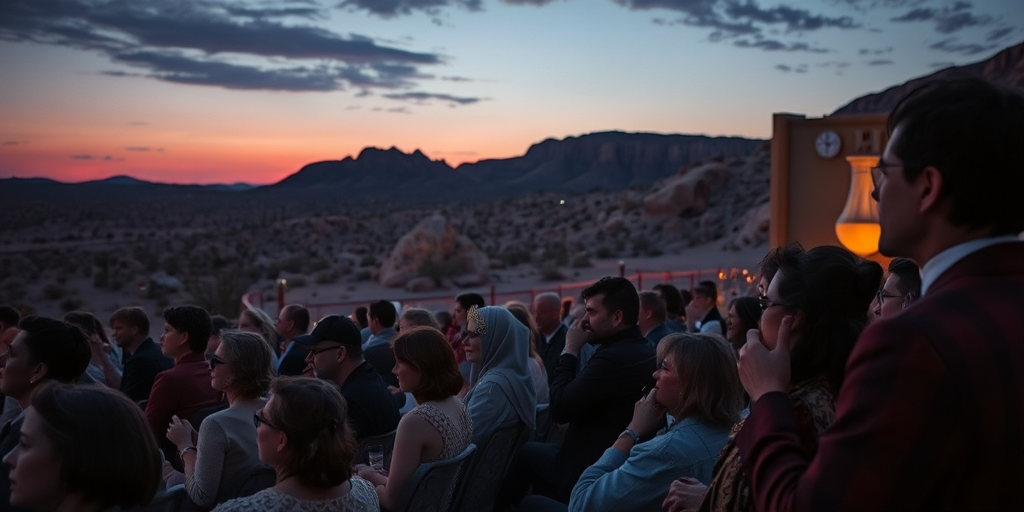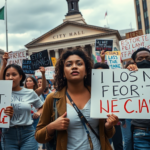Inside the Cerebral Costume Design of ‘Him’—And Why Pay Equity and Diversity Still Matter
In the world of cinema, not all storytelling is told through dialogue. Some narratives come alive in ways that require the audience to look beyond the spoken word—to the costumes, expressions, and surroundings. This is exceptionally evident in the film “Him,” directed by Justin Tipping and produced by Jordan Peele, underlining the critical role of costume design in weaving a film’s narrative tapestry. Yet, hidden beneath the layers of fabric and creativity lies a discourse on pay equity and diversity within the industry—topics that still demand our attention.
The Film’s Narrative: A Psychological Exploration Through Costumes
Shot predominantly in Albuquerque, New Mexico, “Him” employs its barren landscapes and muted color schemes to heighten the contrast with vibrant costumes designed by Emmy-nominated Dominique Dawson. The film depicts the story of Cameron Cade, a college quarterback entangled in the realities of the psychological and physical impacts of sports, particularly football. Following a near-career-ending injury inflicted by a mysterious costumed figure, Cameron navigates a world where fantasy and reality blur.
Dawson’s costumes in “Him” serve as more than mere attire; they are silent narrators that echo the psychological states and inner conflicts of the characters. Drawing inspiration from biblical allegories and stories like Cain and Abel, the costume designs, developed in collaboration with Native American artist Cannupa Hanska Luger, underscore heavy themes of capitalism and cultural stereotyping. “You’re trying to create this unique universe… if I were able to put it into one word, it would be psychosis,” explains Dawson, who highlights the mental toll faced by athletes in their pursuit of greatness.
The Local Impact: A Lens on New Mexico’s Cultural Scene
The film’s roots in Albuquerque bring a unique touch to its atmosphere, reflecting New Mexico’s cultural and artistic diversity—a fitting backdrop given the collaboration with local artists like Luger. This collaboration showcases the rich tapestry of stories and perspectives unique to the area, enhancing community pride and influence in arts on a larger stage. Such partnerships also foster new opportunities for local artists, promoting further cultural exchanges and economic growth within the community.
Challenges and Triumphs in Costume Design
Despite Dawson’s acclaimed work, significant challenges remain for costume designers, particularly concerning women and people of color, who often find it tough to gain acknowledgement or equal pay in their roles. The Costume Designers Guild’s #NakedWithoutUs campaign highlights an ongoing issue within the industry—a roughly $950 weekly pay disparity between costume designers and their male-dominated counterparts, the art directors.
“We’re here, but it’s about the studios and the big movies wanting to explore and take risks and put us in those positions,” Dawson shares, echoing wider calls from across the industry for equality and opportunity. Efforts like the #NakedWithoutUs campaign stress the importance of recognizing costume designers’ vital contributions to film, urging studios to grant fair compensation and visibility.
For instance, the intricate costume storytelling in “Him” involved high fashion collaborations with brands like Klutch Athletics, Balenciaga, and Nike, elevating the narrative and position of the characters. “It’s not about bodyness. It’s about sleek, bold choices, and that’s what we aimed to do with most of the cast,” Dawson elaborates on her creative partnership with director Justin Tipping and the film’s production team.
The Broader Industry Picture and Its Future Implications
The push for diversity and pay equity extends beyond individual stories like Dawson’s. It ties into a broader movement within Hollywood and the arts to create inclusive, equitable environments for all creative professionals. This could positively impact residents beyond the film industry, with wider discussions on equity and diversity influencing other sectors, from local businesses to educational institutions.
Ensuring diverse voices are both heard and fairly compensated creates a more vibrant, innovative industry, one that accurately reflects and tells the myriad stories of its community. As industry leaders like Jordan Peele and creative giants like Dominique Dawson champion these ideals in their work, they challenge others to follow suit.
With upcoming initiatives, educational resources, and public forums discussing these crucial topics, the local communities in areas like New Mexico have a vested interest in advocating for and supporting these changes. As precedent grows within the entertainment industry regarding fair labor practices, it is hoped similar principles will extend into wider economic and labor discussions.
In conclusion, while “Him” navigates the depths of psychological drama on-screen, it also sheds light on the vital behind-the-scenes narratives concerning pay equity and diversity. These subjects resonate deeply within the community and continue to influence local and national discourse. As we unpack the layers of its storytelling and cultural contributions, the call for equity—and the actions that follow—remain key to building a fair, enriched artistic landscape for all.







